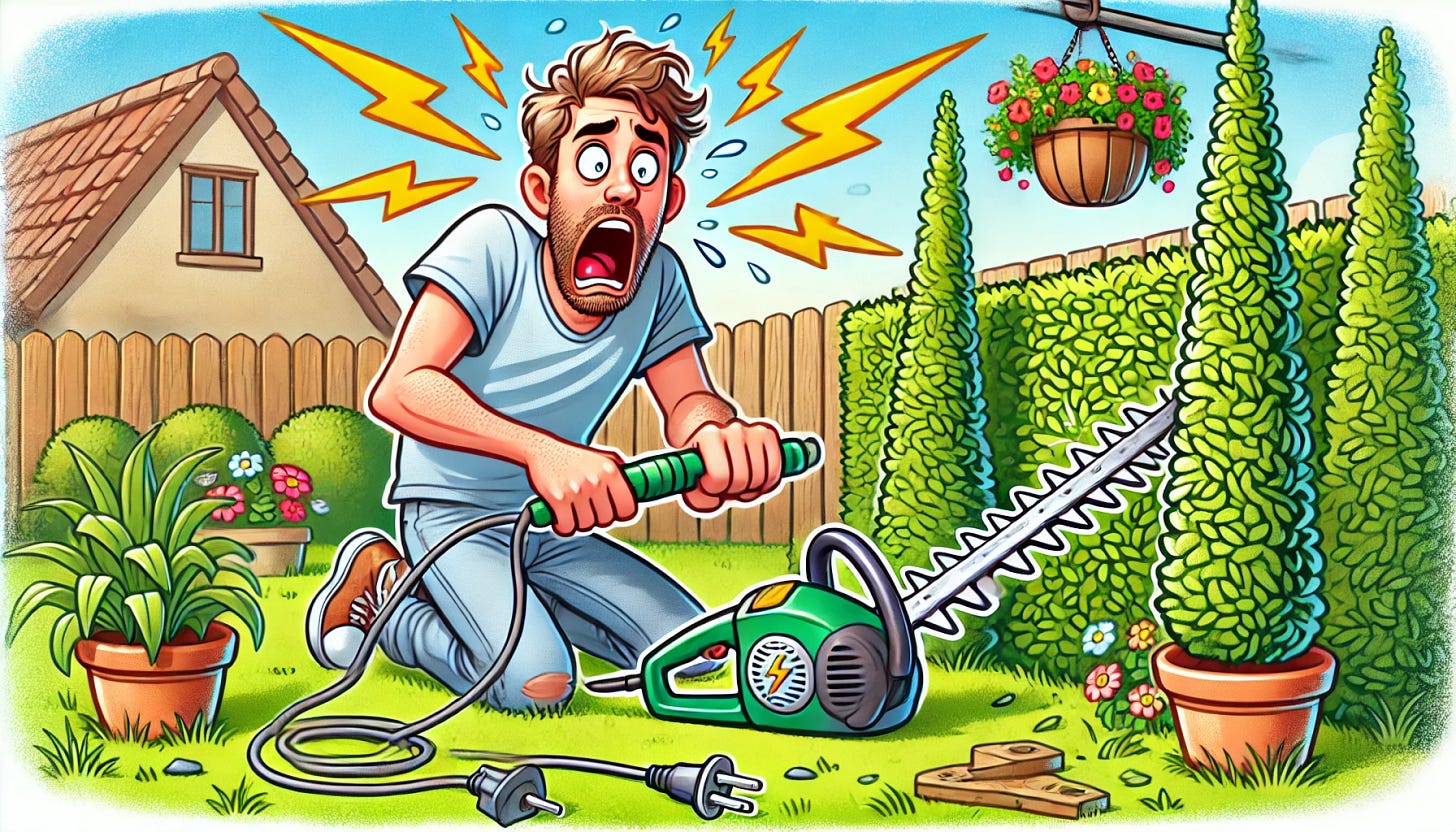It’s fair to say I have quite a ‘complicated’ garden.
When we were buying the house, we had to have an interview with the owner, showing us the plants and trees she’d carefully cultivated, making sure we were green-fingered enough to take on the challenge.
Given that I’m not, my wife took on that conversation whilst feigned enthusiasm for the self-built fuse box cupboard being proudly shown to me by the husband.
Fast forward a few years, and I decided it was time to get stuck into the now-badly-overgrown grassland and attempt to restore it to it’s former glory. And it reminded me of the importance of companies remembering they know a lot more than their customers do.
Having spent a few weeks unsuccessfully hacking away at it with various versions of large scissors, I thought it was time to upgrade to some kind of large, electric saw.
So I went off to the nearest garden and hardware store to see what I could find.
My boys felt like they’d walked into some kind of gritty Disneyland. Hammers! Lawnmowers! Big machines everywhere! Their excitement was off the scale as they ran between the aisles trying to find the most dangerous thing for me to tell them to step away from.
Meanwhile, I found the hedge trimmers. And I just stared at them. A wall of completely identical-looking devices, with various numbers and letters printed over the boxes, and no way of knowing which one to pick. I needed help.
The first colleague I spotted didn’t seem to want to be spotted, keeping his head down as he dashed past.
The second also didn’t seem keen on my attention, launching herself into the paint aisle in an effort to avoid me.
For the third, I sent my kids to jump in front of the fast-walking employee and circle around him until I’d made it over.
Hi mate, I’m trying to by a hedge trimmer, but it’s a bit confusing
OK, which one do you want?
I don’t know really
Alright… this one is a good one. Reliable brand, good price, decent power, 12 month guarantee.
Off he went. And so did I, with the hedge trimmer under my arm.
Back home, I got myself out in the garden to play with my new toy. I plugged it in, put on some safety glasses, and went to work on the big hedge.
Ten seconds later, I’d cut through the wire and short-circuited half the house.
Being an industrious type, I took it to the local electrician, who quickly patched it up for me. In no time at all, I was back in the garden having another go.
This time, I managed about ten minutes before doing exactly the same again.
At this point, I put the house up for sale.
When I told my friends what had happened, they had a range of interesting replies, nearly all aghast that I’d gone for a wired trimmer. Things like:
But your garden has so many tricky bits?
Did you really think that would be powerful enough?
You were trying to do that big hedge?
But John, you have absolutely no idea what you’re doing?
And what was interesting to me was that, these were all exactly the right questions to be asking. And all questions the person in the shop could have asked to help me get the right product.
But they didn’t. And they probably didn’t because of the curse of knowledge.

Once we know something, it’s almost impossible to remember what it’s like to not know it. And this is what makes it so hard to see the world from the outside-in, from where your customers stand; to remember to ask the most basic questions, to speak in a langue that can be easily understood, to explain a process as if it’s the first time anyone has ever done it.
Banks and overdrafts. Airlines and airport security. Mobile phones and data plans. Energy companies and tariffs. Trains and ticket restrictions. Supermarkets and food labelling. It’s true in every industry.
The only way around it is to stay really close to matters to your customers, to spend time on the frontline, to try and be regularly reminded that your customers are not you, they don’t know your business, they don’t know your products.
Doing that might help you design some amazing customer experiences - and it might save an expensive electrician bill, too.



